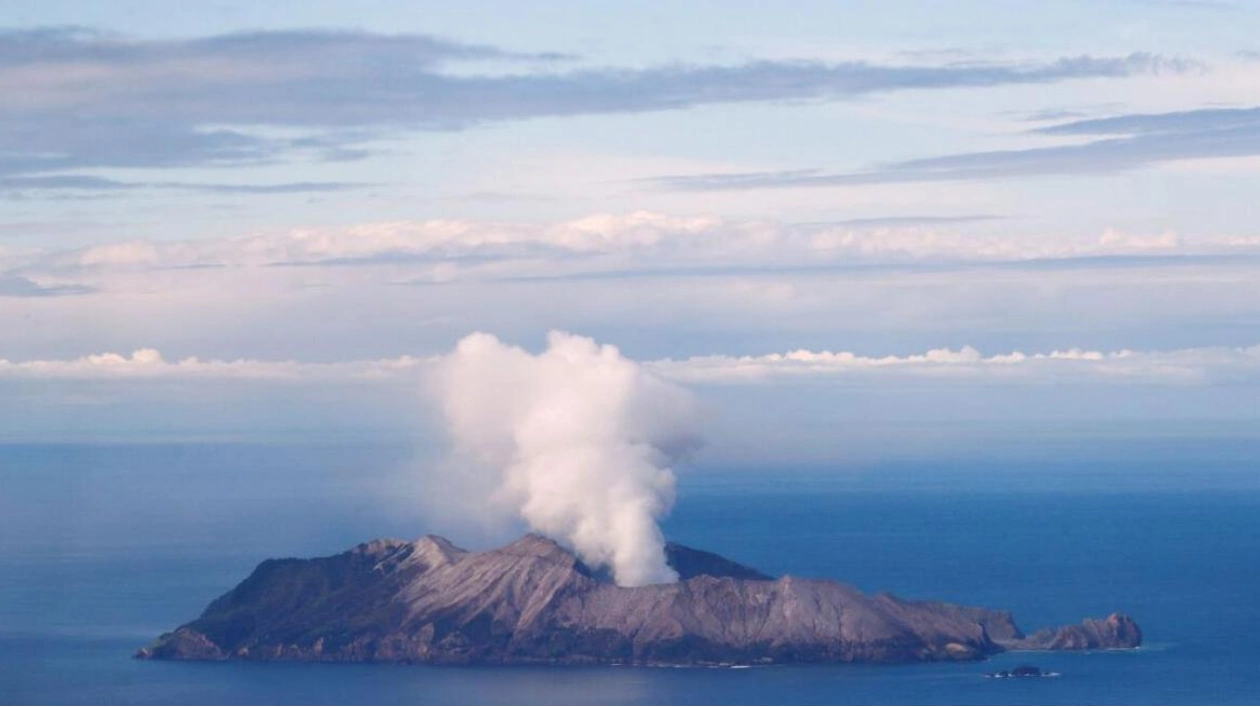A volcanic eruption on Thursday spewed a cloud of ash that led to grounded flights in New Zealand, as government scientists cautioned that the venting could persist for "weeks to months." This eruption involves the same White Island volcano that erupted in 2019, resulting in 22 fatalities. The island, previously a tourist hotspot, is situated approximately 50 kilometers (31 miles) from New Zealand's North Island and 200 kilometers from Auckland, the nation's biggest city.
National carrier Air New Zealand reported the cancellation of 10 flights early Thursday due to the volcanic ash affecting flight paths. An airline representative informed AFP that flights had recommenced once the ash in the airspace cleared. Satellite imagery revealed "minor eruptive activity" at the beginning of the month, according to a monitoring bulletin from research institute GNS Science. They attributed this to the "typical eruptive cycles" observed on White Island, also referred to as Whakaari in the Indigenous Maori language.
Scientists warned that this activity might continue for an extended period, ranging from weeks to months. They noted that residents on New Zealand's main islands might experience the smell of volcanic gas or mild eye and throat irritation, albeit with minor consequences. New Zealand had elevated its volcanic alert level to three earlier this month, out of a possible five levels. Tours to White Island have been prohibited since the 2019 eruption, which has also complicated scientific research on the island.
Volcanologist Simon Barker from Wellington's Victoria University highlighted the challenges posed by the lack of monitoring on the island due to the 2019 eruption and restricted access, which prevents the repair of seismic and geodetic networks. This situation makes it difficult to contextualize the ongoing activity within past eruptive episodes and to evaluate system changes. Gas flights, drone footage, and ash emissions indicate that magma is near the surface, suggesting that the activity could continue for an extended period.
Volcanic ash poses significant risks to aircraft engines, according to earth sciences expert Adrian Pittari. Ash in volcanic plumes is a recognized hazard to airplanes as it can obstruct fuel lines, adhere to engine surfaces, and erode components. It may also disrupt electrical and computer systems, infiltrate cabin areas, and diminish visibility. The concentration of ash in the atmosphere and the duration of flight in affected airspace are crucial factors. Pittari referenced incidents from the 1980s where Boeing 747 jets temporarily lost all engine power after encountering concentrated ash plumes in Alaska and Indonesia.
A global network of Volcanic Ash Advisory Centres tracks ash plumes and weather patterns, providing the aviation industry with information on airborne ash hazards. This aids airlines in planning flight paths and cancellations in regions affected by volcanic eruptions, according to Pittari.






